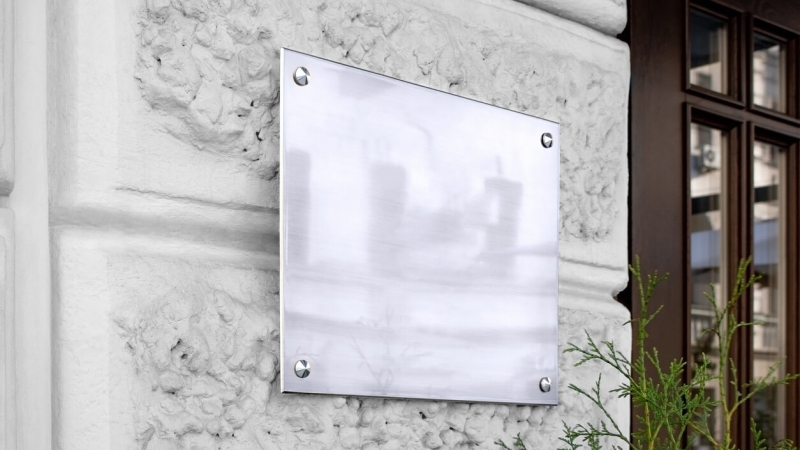When you think about iconic brands, both within and outside the hospitality industry, you likely picture their logo. Hotel logos are often iconic, memorable, and come to be associated with the brand and its identity for guests and clients everywhere. This means that competition is incredibly high — especially for hotels that are just getting started or those looking to revamp their design. With that being the case, we're here to help.
Discover 10 must-know ideas, tips, and examples of hotel logos:
Your logo has a few really important jobs for your hotel and brand. For starters, a great hotel logo should:
- Catch the eye of guests, online shoppers, planners, vendors, and partners
- Work well in large and small formats
- Be appropriate for use on physical and digital goods
- Convey the hotel’s brand identity
- Be simple and memorable
With these important priorities in mind, it can be hard to know where to start. But with a few design principles and hospitality-specific tips under your belt, it gets a lot easier.
Let us help you grow your group business
1. Understand the identity of your brand.
The biggest priority at the beginning of the design process is clearly articulating brand values and messaging. You want to get a good sense of your hotel’s identity from the perspective of your audience, whether that's guests, vendors, partners, your competition, or even your internal staff.
Consider a few important brand questions. Why are you here? What makes your brand unique? Who does your brand serve? How do you want guests to feel about your brand? What personality traits or values do you want to convey? Your logo can go a long way towards answering these questions and attracting the right audience.
Your logo can show off the overall feeling you want guests to have when they interact with your property. Whether that feeling is based on trust and traditional values or trendsetting, creativity, adventure, and fun — it doesn't matter. Things like color, typography, and symbols have a big impact on the overall feeling conveyed by your logo (more on this later). Narrow down the style you want to use to match your brand messaging. Will you opt for a traditional and timeless style? More whimsical? Do you want to incorporate humor and wit? Or will you opt for a logotype, representing your hotel’s name in an appropriate font?
2. Use respected/competitor hotel logos as inspiration.
Once you've identified the brand feeling and identity, it’s time to take a look at the competition. Keeping an eye on respected brands and your direct competitors gives you important advantages in the design process. First, you can use these hotel logos as inspiration. Second, you can respond to design trends in your industry, region, and niche, either by falling in line with the trend or deliberately rejecting it. Third, you can make sure your logo shows off how you're different from your competitors and make sure you don’t end up with similar imagery, colors, or designs.
3. Use white and negative space to create a clean look.
Simplicity is key when it comes to hotel logos. You'll be using your logo in a variety of contexts — from your online advertising and website to branded merchandise, towels, and even on the front of your building. The simpler your design, the better it will look in a variety of formats, and the more memorable it will be.
Simplicity is often achieved through the strategic use of white and negative space in your logo. Negative space can be used to convey additional meaning. Look to the famous example of the FedEx logo with its hidden arrow, for example. It can also be used to show two symbols in your logo instead of one. By playing with the different design elements in your logo, you may just find some happy accidents that use negative space in clever ways.
4. Pick the right colors for your message.
Much has been written about the psychology of color in logo design, and with good reason. Your guests will have subtle feelings about your brand the moment they see your logo, and they may not always know why. Blues and greens often make people feel calm while conveying that the business should be trusted. Greens and browns are used to show off a sense of eco-friendliness and sustainability. Yellow and orange are bright, happy, and show that the business has a lot of energy and vitality. Purple (sometimes paired with gold), especially in hospitality, gives off a feeling of luxury and class.
Think through the brand message you’ve identified and the audience you’re trying to reach. If you’re trying to appeal to a younger clientele, you may opt for brighter, more vibrant colors, while an older and more established audience (and brand) may opt for more muted tones. You can also consider two complementary colors on opposite sides of the color wheel, but if you do, target one color more than the other to avoid confusion and eye fatigue.
5. Make sure your hotel logo looks great in black and white.
Your logo won’t always be displayed exactly the way you design it. Make sure you have a clean and simple design that looks professional and beautiful in black and white as well as in color. This way, you still convey your brand message in limited media like newspapers, press releases, and single-color imprinting on merchandise.
Some hotels even opt for a black and white look all the time. These brands are usually trying to convey a feeling of traditional values, luxury, or classic styling. They often have no symbols, or only a simple symbol, associated with them. This gives the logo an overall look of elegance that's hard to achieve with more complicated designs.
6. Use the right font.
Sometimes you don’t even need a symbol in your logo to convey the right message. Logotypes are logos that only include the name of your brand written in a specific font. The font conveys everything it needs to without additional imagery.
More and more hotels are opting for this approach. The ease of use and applicability to a variety of situations make logotypes a great choice for hospitality, and a tempting approach in general. If you decide to focus on a logotype design, think about your typography carefully. Serif fonts are generally associated with traditional businesses, trust, classic styling, luxury, and cities. They can also look staid or stuffy in the wrong context. Sans-serif fonts are associated with youth, modernity, trendiness, and an eye for design, but can look childish or silly if handled improperly. Handwritten and script fonts can work well for boutique hotels, but you need to focus on readability to make sure the message (and the name) are clear.
7. If you highlight one element, scale back others.
Your hotel's logo will be more cohesive and visually appealing if you can maintain a sense of balance between the competing elements. This means that highlighting one element should result in scaling back the others. For instance, if you decide on a bold custom font, you might want to consider more muted colors, symbols, gradients, or shadows. If you want the guest’s eye to focus on your clever use of symbols, use a simpler font. And for any logo, be sure to balance your color choices to ensure that you aren’t overwhelming the eyes of your audience.
8. Avoid generic hotel logos and cliches.
It’s an unfortunate reality in logo design that certain concepts and styles tend to be overused. This is doubly true in hospitality, where the same images seem to get used over and over to represent travel, tourism, hotels, and adventure. For the sake of your guests (and all designers everywhere), try to avoid common cliches.
For example, just because guests sleep in your hotel doesn't mean you need to show a bed in your logo. Your hotel is a big building, but your logo does not also have to depict a big building. Travel doesn’t always need to be shown using a plane, a globe, or a map. Step outside the box and instead consider what some of these concepts mean to your audience. Does travel represent freedom? Can you show movement in the logo itself, rather than showing it with a vehicle? Can you convey something about your destination without showing obvious symbols like palm trees, waves, mountains, or a skyline?
Learn all about the latest group business best practices
9. Picture your logo in various contexts.
Hotels and other hospitality brands need to consider the variety of contexts where their logo could appear. You may include your logo on everything from napkins, toiletries, and keycards to billboards, room service menus, sales collateral, and your website. Because of this, you need to consider how the logo will look in various formats. Do you have a version that you can use as the favicon on a browser tab? What about a version that will look clean when stitched on a towel? Can it be blown up on a billboard or entry sign and still look great? Jot down a quick list of everywhere you expect to use the logo so you can think through how it will look and whether any tweaks to the design will be needed.
10. Think about the big picture.
Your final step in the design process should be taking a step back and looking at what you’ve created. How do you and other stakeholders feel about it? Will it stand the test of time? Can you continue to use it as your brand expands? While your brand may be local for now, the nature of hotels and hospitality means you may open different locations in the future. Consider any cultural misunderstandings, innuendos, or alternate meanings that your design could take on as you expand across your region, the country, and the world.
This is also a great time to get a second opinion, whether from colleagues that haven’t been involved in the design process or from other interested parties. They may see something you hadn’t considered, or even have ideas for using humor, wit, hidden meanings, and more to add creativity and flair to your design.
Put these hotel logo ideas, tips, and examples to good use today!
Once you’ve got that logo ready, check out some other visual storytelling methods to increase sales and boost business.











